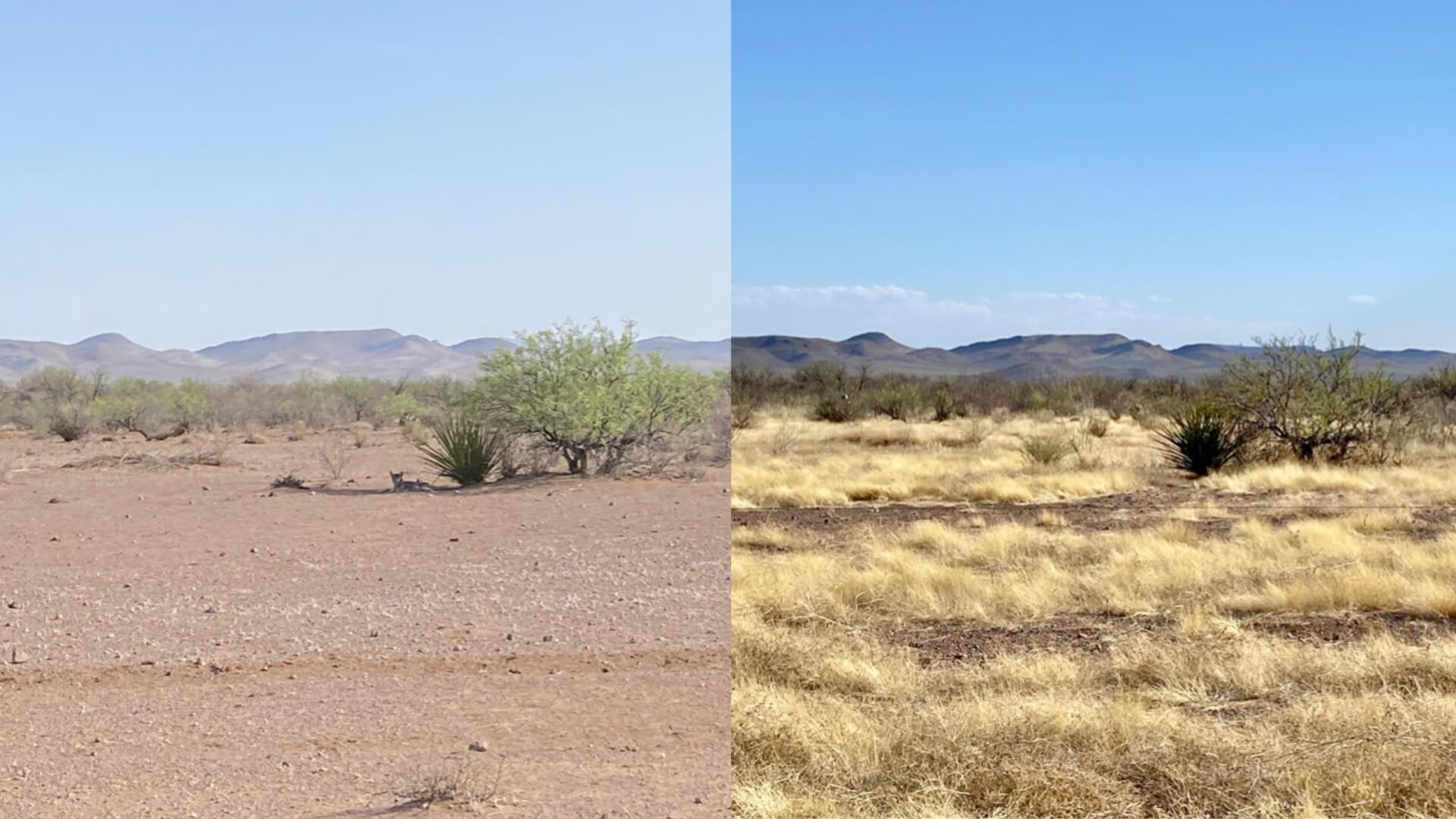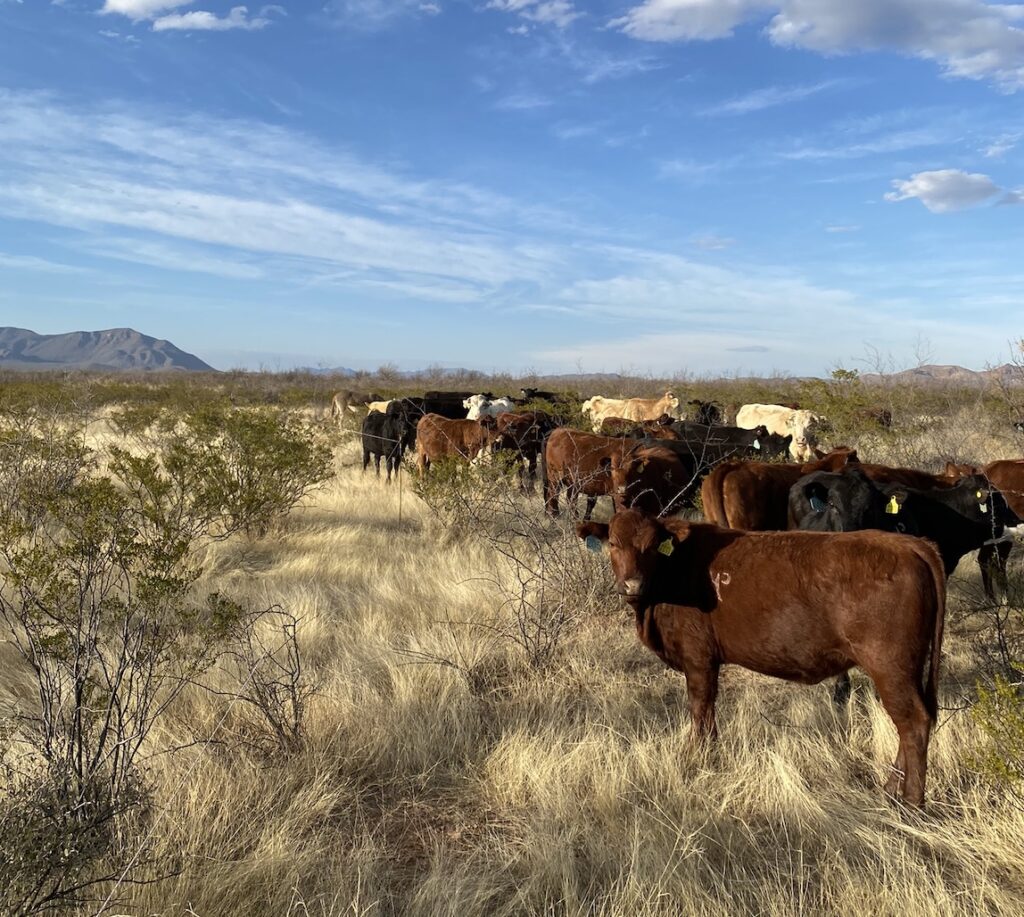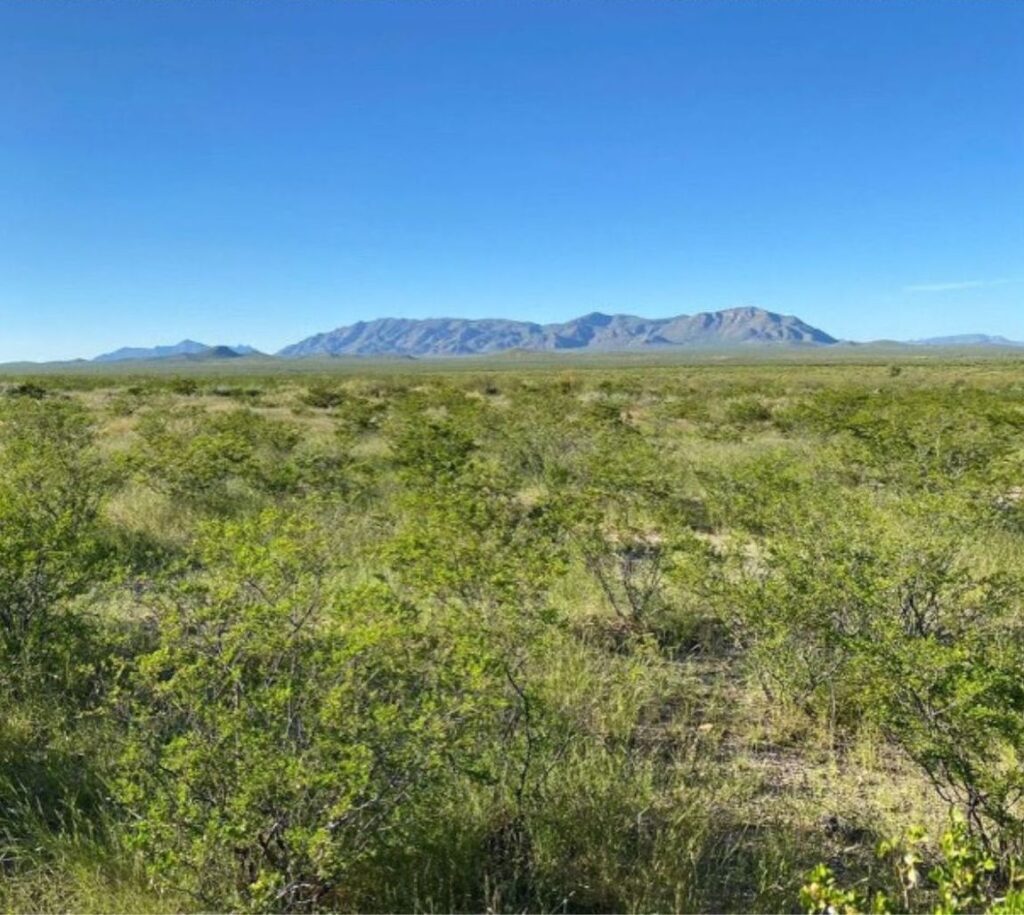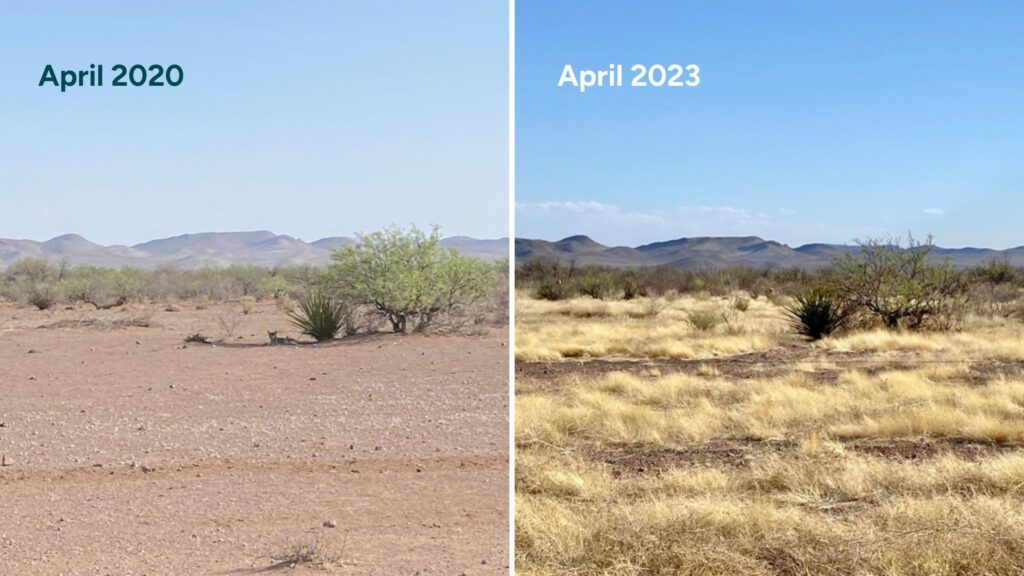desplazamiento

Jorge Pando, a young Mexican rancher, started working with his father on El Apache ranch in 2018. Two years later, he discovered Boomitra’s carbon program and connected with our local technical adviser, SGanaderas, para obtener orientación sobre el manejo regenerativo de tierras en el norte de México. Jorge comenta, "con la experiencia de SGanaderas, desarrollamos rápidamente un plan integral para el rancho".
"Cuando vimos por primera vez el rancho, el suelo y las condiciones, sabíamos que necesitábamos hacer un cambio".
We asked Jorge about the condition of El Apache Ranch prior to implementing regenerative practices. He shared, “Stormy air caused the top layer of soil to soar.” Dryness in the area triggered many allergic reactions and health problems for ranch employees. Jorge noted that heavy rain led to significant erosion and that their ranch was limited to just one species of grass. He explained, “The poor conditions came from 20 years of bad management and conventional practices, including the use of agrochemicals and cow vaccines.”
In 2020, a new practice was introduced at El Apache Ranch: rotational grazing. This involves moving livestock to designated areas, known as paddocks, while allowing other parts of the land to rest. “We started with a 2200-hectare pasture, then we broke it into 4 paddocks, then the evolution began,” Jorge told us. “Now we have 124 paddocks of about 16 hectares each, divided by electrical solar-powered fences. The 124 paddocks are further divided into smaller sections, for a total of 2976 paddocks.” Each paddock gets over 18 months of rest before it is grazed again.
“I emphasize to my co-workers that during rotations, which change from season to season, cows can’t fully graze down a paddock.” Thanks to this caution and the expansion of soil rest periods, the grasses have time to regrow. The team at El Apache constructed dikes near natural arroyos, also known as gabions, to properly filter water into the soil. They also created central paths that both the cattle and the employees can use so that they don’t step on the resting soil. “It is very impressive how refreshed the soil is compared to the old management after only two years.”


“The conditions of the soil keep getting better while producing more plants and capturing more carbon,” said Jorge.
Year over year, water retention has improved. The improvement of soil moisture resulted in increased pasture production and a reduction of health risks, effectively alleviating allergic reactions, including those experienced by Jorge himself.
“From just one species of grass now we have 17 species of grass,” Jorge noted.
“In addition to increased grass biodiversity, there are more species of birds and other small animals for coyotes and pumas to prey on, which has ultimately reduced predation of our livestock.”
The soil at El Apache Ranch was monitored carefully from the beginning. “We had the chance to work with geospatial engineers at Boomitra who showed us satellite imagery of our land. One year after making changes, our ranch obtained the best basal cover of the last 10 years,” Jorge stated. In areas of El Apache Ranch, basal coverage, the density of plants above the ground, rose from 2% to 20%. The resulting increase in fodder has led to higher cattle pregnancy rates and more efficient weight gain.
Jorge reflected, “The most amazing thing is that by aligning with nature and working in accordance with it, we stop being enemies.”
A Jorge le gusta dar paseos con su padre por el rancho, donde a menudo conversan con los vecinos. "Últimamente, los dueños de los ranchos adyacentes han solicitado alquilar nuestros potreros para su ganado porque tenemos más pasto que vacas", informó Jorge. Compartió que esta fue la "mejor noticia" desde que comenzaron a practicar la gestión regenerativa del ganado y espera que inspire a otros a seguir su ejemplo.
"Para mi padre, muchas otras personas y para mí, estas palabras significan futuro. Un proyecto como este es muy importante y muy difícil al mismo tiempo porque requiere un gran cambio, pero es el único camino a seguir".

Stay up to date on all things Boomitra by signing up for our monthly newsletter, The Monthly Capture.



